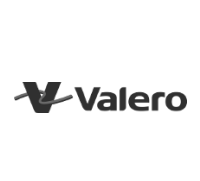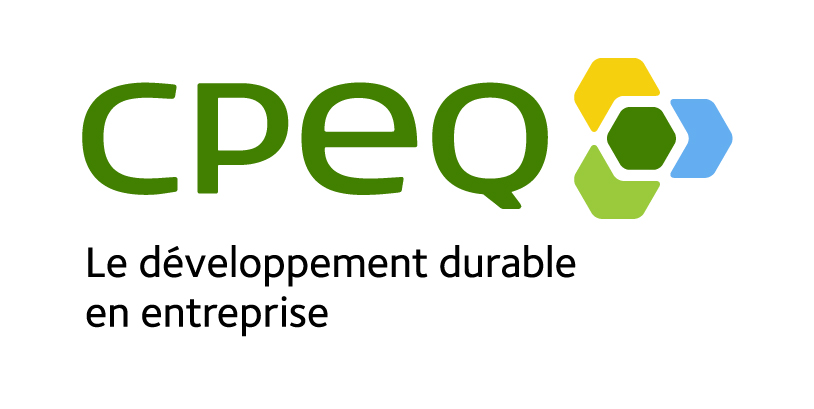 |
The company should communicate well with internal and external parties on how it handles its good neighborly relations. To this end, it should raise these parties’ awareness, produce a communication plan and set up a liaison committee. |
3.1 Raising Awareness, Informing and Training Employees and Subcontractors

Very often, the company’s employees or its subcontractors deal directly with members of the community. In a good neighbor initiative, it is essential to understand all interactions with the neighbors.
The following subsections present information and advice on how to raise employees and subcontractors’ awareness and inform and train them effectively.
» Raising employees and subcontractors’ awareness of the need to maintain good neighborly relations
Raising the company’s employees and subcontractors’ awareness to the issue of good neighborly relations is a crucial stage in a good neighbor initiative. These people are key players for their company and their actions, attitudes and communications can influence the company’s credibility and its relations with its neighborhood.
As part of this awareness-raising exercise, the company should make sure that the context in which it operates is well understood. Its employees will understand their role better and will be more motivated to take part in the process, with the aim of maintaining good neighborly relations. Their awareness can be raised by:
- Citing examples of existing problematic situations the company is dealing with, for which it must find solutions;
- Presenting the evolution of the notion of environment towards the notion of sustainable development while also presenting the bases of “corporate social responsibility;
- Informing the employees of the consequences likely to result from a bad neighborhood situation;
- Popularizing the Supreme Court judgment in the St. Lawrence Cement case;
- Discussing the environmental legislation.
» Informing the employees and subcontractors about the consequences for the company of failing to maintain good neighborly relations
In addition to clearly understanding the need for the company to maintain good neighborly relations, the employees and subcontractors must understand that bad relations between the company and its neighborhood can directly and negatively impact the company’s operations.
Pressure from the neighborhood can affect not only the company’s profitability, its activities, production hours, development and the addition of new activities, but also certain jobs. Presenting concrete examples related to the company’s operations is always a good way to make reality easy to understand.
» Raising the employees and subcontractors’ awareness of their role as the company’s ambassadors and representatives
The employees are the company’s representatives. They are also actors of our society. They pass judgment on their employer and discuss their work.
By raising their awareness of the company’s actions and of the importance of maintaining good relations with the neighborhood, they will be able to “defend” the company’s image in their community.
It is thus important that messages be communicated clearly and coherently so that all employees convey the same message. Naturally, the more coherent the company’s message, the more credible it will be with its employees and the more they will buy into the message and convey it in turn.
It is important not to neglect the fact that the employees are the company’s ambassadors. If provided with clear communication tools, they will convey essential messages to the community.
A form with questions and answers designed for employees and subcontractors can be very useful. However, they must understand that they are not the company’s official spokespersons, but may nonetheless be called upon to answer questions in the course of their duties or on a more personal basis. In this event, they must limit themselves to the message they are authorized to convey, take note of the contact details of people who want more information, and leave it up to the official spokesperson to get in touch with them.
» Establishing a system for gathering employees’ perceptions and knowledge
In undertaking a good neighbor initiative, employees should be consulted to find out their perception of the potential impact of the company’s activities on the neighborhood. This group can provide a different perspective and allow the company to adjust its action plan. In addition, a process could be established so that employees can easily communicate any relevant information likely to affect the company’s reputation or its good relations with the neighborhood.
» Raising employees’ awareness of volunteering or sponsorship in the neighborhood
The corporate citizen values its employees’ volunteer involvement in the community. In addition to supporting certain causes, the company shows its commitment to its employees and the community by supporting the employees’ involvement on an individual basis. Several avenues are possible in this regard:
- Offer financial support by defining a donation policy based on the employees’ volunteer action;
- Release work time for employee participation in local causes;
- Value employees’ social involvement by offering rewards or recognition awards;
- Publicize the employees’ volunteer involvement in internal or external publications;
- Establish a sponsorship program in the neighborhood.
3.2 Developing a Communication Plan for the Company

To maintain and improve good neighborly relations, but also to maintain good relations with all stakeholders in the community, it is important to establish and maintain communication and exchanges with these stakeholders. These ties are developed as trust is established, based on the information communicated and the openness and transparency shown by the company.
Unless there is a clear and precise mechanism for conveying information, there is a risk of omitting certain elements that can undermine the company’s credibility and give way to rumors and speculation. This is when the communication plan takes on its whole significance.
In short, the plan seeks to define the communication objectives clearly and precisely. It also seeks to define the “message” the company wants to convey. It then defines the target audience and how the message will be conveyed. Finally, it will be appropriate to define the costs of implementing the plan, the time that will have to be allocated to this plan and the person who will be responsible for it.
The plan should highlight the company’s place in the community and the nature of its contribution and commitment. With its communication plan, the company should build up a capital of sympathy and always do its best to find a solution. The plan should be drawn up when relations with the stakeholders are good.
The process of writing the plan must be scalable and iterative. The “closer” the relationship between the company and its stakeholders becomes, the more the ties and the type of information conveyed will evolve. For example, during the initial contacts between the company and its neighbors, the company will explain what it does and why it does it. In other words, the company will have to “introduce itself”. It will also have to learn to listen to the stakeholders and then be able to innovate.
Subsequently, as the stakeholders and the company learn to know each other, more specific information will be communicated. Finally, in order to achieve a level of maturity, the company will include citizen participation in a concerted process to involve the neighborhood in the search for solutions.
Before starting to develop the communications plan, however, the company needs to question the relevance of this plan and define its eventual operational framework. At this stage, an evaluation will be performed.
» Assessing the relevance of producing a communication plan
The first stage of developing the communication plan consists of evaluating its relevance. It is true that a rigorously prepared communication plan provides a coherent framework for communication actions. However, if the means are limited or if there is a small number of stakeholders, a company could decide not to develop a formal communication plan. This simply will involve gathering the messages and the tools in a reference document, which could be likened to a communication plan.
The evaluation of the plan’s relevance will make it possible to define the company’s operational framework into which the communication plan is integrated. Any communication plan should be coherent with the company’s strategic or development plan. It could otherwise end up in a situation that jeopardizes the success of the reconciliation process with the neighbors. In performing this evaluation, the level of transparency regarding the information to be conveyed should be specified.
» Determining the people responsible for the communication plan
The success of any plan largely depends on the accountability of a communications officer. In a situation where the company has not designated someone for this responsibility, it is easy to skip steps that would be critical to the plan’s successful implementation. Furthermore, identifying a responsible individual or individuals ensures better follow-up and greater coordination. This identification may depend on the scope of the plan. For a smaller plan, the company will designate a single communications officer. For a more complex plan, responsibilities will be assigned according to each person’s competencies and interests.
» Determining the objectives of the communication plan
It is appropriate to define the communication plan’s objectives. In a “good neighborly relations” context, this mainly involves improving relations with the neighbors.
The communications officer will have to give it more thought and detail the goal of this process. The officer will have to determine whether the goal is to improve the corporate image, obtain acceptance for changes in a company’s activities or its expansion, reduce the number of complaints, or simply inform the stakeholders about how the company will deal with the nuisances.
For example, the company may choose to inform the neighborhood or the municipality regularly of the date and hours of the work and the nuisances that could result from it. The company may also decide to announce the tools put in place to minimize or, if possible, eliminate the nuisances in the future. By receiving information and being informed in advance about the schedule of activities and the mitigation measures, the public will feel they are being treated with more respect and consideration and will show greater tolerance of the potential nuisances created by nearby industrial activities.
» Deciding on the messages and content of the communication plan
After defining the communication plan’s objectives, it is appropriate to develop the messages to be conveyed and their respective content in order to obtain the expected results. Some authors propose defining the messages before identifying the target audience. Specifying the content before identifying the stakeholders makes it possible to obtain a coherent message adapted to the discussion partners. However, others propose defining the messages and their content according to the target audience, because the type of message will be tailored accordingly.
For the purpose of this guide, it is important to have an idea of the general message to be conveyed, which will be articulated from the objectives defined in the previous stage. This message can be adapted to the target audience. For example the message to be conveyed to the general public will be different from the message to be communicated to local institutions.
The message thus corresponds to the ideas that must be conveyed and that the discussion partner must remember. For the message to be clear, it must be expressed in simple terms and short sentences. Finally, the quality of the argument is essential to the effectiveness of a message.
Since the goal of the communication plan is to maintain and improve good neighborly relations, it is appropriate to inform the community about the benefits and services provided by the company. The community can thus know the company better and understand the context in which it operates. One of the key factors of a healthy relationship with the neighborhood is to explain the nuisance management process. This information will then be adjusted to the stakeholders: individuals, municipality or government authorities. This information can also be communicated to financial institutions or insurers, and perhaps even to the shareholders, to assure them of the importance given to this issue.
» Identifying the target audiences
Another section of this Guide presents the procedure for identifying the stakeholders in the community. The target audiences will be selected from this list. For each audience, the approach, the style and the content will have to be identified. To achieve the desired results, it is recommended to know each party’s characteristics and concerns. When adopting the discussion partner’s point of view, it is useful to try to imagine what they think, what they feel and what they consider important, without forgetting to consider their cultural identity, level of knowledge and needs.
The media, especially the local media, are often forgotten stakeholders, despite the fact that they can become important allies. They should be met on a regular basis, so that they become familiar with the company’s activities and operations.
» Choosing the communication tools
Another important factor in the communication plan is choosing the communication tools. There are a wide range of tools, each with its own characteristics. Here are a few examples of communication tools:
- Communication events (meetings, seminars, open house, etc.);
- Printed media (newspapers, magazines, pamphlets, posters, etc.);
- Audiovisual media (television, radio);
- Electronic media and social networks (Internet, Webinars, Facebook, Twitter, blogs, emails, etc.).
The choice of communication tools will have to be based on the target audience. Some tools are more effective than others with a specific type of audience, such as the social networks, which are very popular with the young. Finally, direct contact between the company’s representative and the stakeholders must not be neglected. The ties created by these contacts foster trust between the company and its neighbors.
It is also possible to opt for a survey to find out the neighbors’ concerns. Attendance at relevant stakeholders meetings (municipal council meetings, public meetings, etc.) is another communication tool.
» Developing an implementation timeline for the communication plan
The timeline is linked to the different steps of the communication plan. It will enable you to set a rhythm for releasing information that takes into account the company’s resources and each stakeholder’s ability to absorb the information. Frequency and regularity are factors that will help maintain interest levels.
» Monitoring the communication plan
It is crucial to produce an ongoing assessment of the communication plan’s implementation. This assessment will identify the strengths and weaknesses of the messages and the tools used. In the course of the assessment, it will be appropriate to validate whether the right message was developed and whether the appropriate communication tool was used to maximize achievement of the objectives. This process will also evaluate how the company and its activities are perceived in the neighborhood. This last step makes the communication process iterative and scalable.
Meanwhile, it is just as important to ensure a continuous watch of the social media and employees’ perceptions, to find out the neighborhood’s stance towards the company.
In the company’s external communication strategy, setting up a liaison committee is another crucial step.
3.3 Setting Up a Liaison Committee
Liaison committee, advisory committee, citizens’ committee – different names are given to a group made up of representatives of the company, the stakeholders and the community in general. This group serves as an intermediary to foster dialogue and develop lasting and harmonious relations between the different players.
This committee’s objective is to facilitate exchanges and the dissemination of information, and thus allow a better understanding of the collective issues in order to choose the best strategies and action plans. The following subsections contain information and advice on how to set up a liaison committee and make this a successful initiative.
» Drawing up the liaison committee’s mandate
When a company chooses to set up a liaison committee, it should begin by drawing up this committee’s mandate and then choose the people best qualified to take this mandate on. The company’s management should ratify the terms of the committee’s mandate.
Once the mandate is drawn up and adopted, the company can identify the neighbors and other stakeholders whom it can invite to sit on the committee.
Despite the terms of the mandate, the committee’s role is in effect to favor a closer relationship between the company and its neighbors. To this end, bonds of trust must be developed over time.
The committee must therefore show flexibility so that all participants may find an interest in serving on the committee.
» Identifying citizens and other stakeholders who will be part of the liaison committee
The members of the liaison committee will be chosen on the basis of uniform representation of the community, with all social strata being represented.
The committee will also include members who have already declared themselves in favor of or against the company. It is essential that the people invited not only be those in favor of the company’s activities, but rather that the group be representative of all stakeholders, thus creating a forum conducive to constructive discussions.
It is also strongly recommended to invite representatives of the municipality and the government, as well as environmental groups, to take part in this committee. Even if they decline the invitation, they at least will have received one and will know of the existence of the liaison committee and its mode of operation.
» Setting the frequency and format of the meetings
One of the committee’s first activities is to establish the frequency and format of the meetings. The committee can meet on a monthly basis or three or four times a year, depending on the needs of its members and current issues. To meet the committee’s objectives and maintain the members’ interest, sessions should generally be held at least twice a year.
The appointment of a moderator allows the facilitation of discussions and confers the right to speak under the best possible conditions. Moreover, the moderator can set the schedules of the meetings and ensure that the minutes are taken.
This moderator will usually be a communications specialist, which can reassure some companies less familiar with this type of process. The responsibility for managing the administrative and logistical structure of the meetings can also be entrusted to a third party.
It may be interesting to hold the meetings off the company’s premises and thus benefit from neutral ground, more conducive to exchanges. The meetings can of course also be held on the company’s site. In such cases, it is desirable to provide an informal meeting room suitable for group discussions.
The primary objective of these meetings is to deal with the public’s questions and concerns and to respond to them specifically and in detail.
To allow the company to prepare adequately and respect the agenda as much as possible, it is advisable to include the questions for discussion on the agenda and distribute them at least one week before the meeting. One may also decide, at the beginning of the year, on the topics to be discussed at all upcoming meetings, or identify them at the end of each meeting in preparation for the next. It is always preferable not to overload the agenda, so as to allow enough time for the participants to express themselves, ask questions and encourage discussions.
» Presenting the participants with the improvements made to the processes, the nuisances resulting from the company’s activities and the list of actions taken to reduce and, if possible, eliminate these nuisances
The company has an informative and educational role towards the members of the community. During the liaison committee meetings, the company should be transparent. This is the basis on which a bond of trust will be established among the committee participants.
The company should announce its mission, vision, values and activities, while showing that it is in control of the situation through the actions it undertakes. It should also inform the community about the improvements introduced to find solutions to the company’s known problems. By adopting a frank attitude, even for elements requiring improvement, the company establishes its credibility and shows its desire to improve. Usually, when citizens are aware that the company is seeking to improve, they show tolerance and even contribute to seeking solutions.
» Inviting the participants to share their concerns and validate the list of nuisances
During the liaison committee meetings, it is suggested that time be set aside to obtain the participants’ comments, through discussions, direct questions, or even surveys.
» Inviting the participants to suggest solutions
The company encourages the participants to suggest solutions.
When the participants suggest solutions and the company does not accept them, it is then appropriate to explain the reasons for this refusal to the participants. Once again, the key to success is transparent communication. This discussion can lead to others, and even bring up new ideas.
» Inviting external experts, NGOs, the local media, the provincial MNA or the federal MP
It may be appropriate to invite experts to introduce topics outside the company’s field of expertise. Resorting to a third party can sometimes energize the committee meetings and offer a more global vision.
The committee would find it beneficial to invite an NGO to attend a meeting as an observer, especially if no NGO sits on the committee. The media play an important role in the chain of communication. They offer a way to propagate information and influence the community. The media represent an effective way to inform the public about the committee’s existence and to confirm the company’s active participation in its community.
At the same time, by organizing a meeting with the media, the company communicates its issues and the actions it takes to a larger segment of the community.
Finding the opportunity to invite an MNA or an MP to meet the members of the community helps foster discussions. This activity will show the company’s level of commitment and will inform the elected representative about the committee and the company’s actions. This is also a way for the committee to do outreach on a larger scale.
» Establishing the degree of transparency that will apply to the information provided during the liaison committee meetings and to the minutes taken
The minutes relate officially and in detail what was discussed and agreed at the committee meetings. Some information must remain confidential, and it is thus important for the company to determine the level of transparency it wishes to achieve and the information it does not wish to disclose. To this end, the company must be aware that the information distributed through the minutes becomes public and can become known to a broader group than the committee.
The company should show an open attitude, even in the presence of issues and information that cannot be disclosed. In such cases, the company should simply inform and explain the reasons why certain information cannot be disclosed. Even in refusing to disclose some items, the company shows transparency by presenting the guidelines it follows on what information it can or cannot disclose.
After review by the company and adoption by the committee members, it is important to identify the means available to distribute the minutes.
The internal and external communication strategy is a tool supporting the company’s involvement in the community. The next chapter presents how the company can get involved in the community.

















